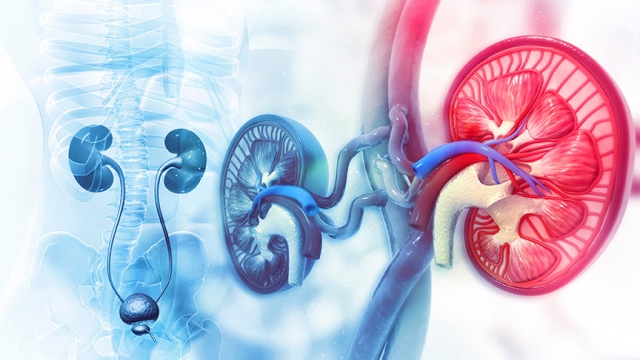Urology, the field of medicine that encompasses the study and treatment of the urinary system in both males and females, plays a vital role in our overall health and well-being. From the kidneys, bladder, ureters, and urethra, to the intricate network of muscles and organs involved, the complexities of urology are fascinating and often unexplored. In this article, we delve into the mysteries of urology, decoding the intricate workings of this medical discipline, and shedding light on the importance of a healthy urinary system. The secrets of urology are about to be unveiled, as we embark on a journey of knowledge and understanding. So, let us unravel the complexities and discover the wonders of urology together.
Common Urological Conditions
Urology is a branch of medicine that focuses on the diagnosis and treatment of conditions related to the urinary tract and male reproductive system. In this section, we will shed light on some of the common urological conditions that many individuals may encounter.
Urinary Incontinence: This condition refers to the involuntary leakage of urine. It can occur due to various reasons such as weak pelvic muscles, nerve damage, or hormonal changes. Urinary incontinence can greatly affect a person’s quality of life, causing embarrassment and social anxiety.
Urinary Tract Infections (UTIs): UTIs are infections that occur in any part of the urinary system such as the bladder, urethra, or kidneys. They are often caused by bacteria entering the urinary tract. Symptoms may include frequent and painful urination, cloudy or foul-smelling urine, and lower abdominal pain. UTIs are more common in women but can affect individuals of any age or gender.
Kidney Stones: Kidney stones are hard deposits that form in the kidneys. They are usually made up of minerals and salts, which can accumulate and cause severe pain. Common symptoms include intense back or side pain, blood in the urine, and frequent urination. Treatment options may range from drinking plenty of fluids to surgical intervention depending on the size and location of the stone.

Understanding these common urological conditions is crucial for individuals to recognize their symptoms and seek appropriate medical attention. Early diagnosis and intervention can help alleviate discomfort and prevent further complications. In the following sections, we will delve into other intriguing aspects of urology, unraveling more of its mysteries.
Diagnostic Techniques in Urology
Urology, the specialized field of medicine that deals with the urinary system, encompasses various diagnostic techniques. These techniques assist urologists in identifying and treating conditions affecting the kidneys, bladder, ureters, and urethra. In this section, we will explore three commonly used diagnostic techniques in urology.
Ultrasound is a widely employed diagnostic tool in urology. This non-invasive technique uses sound waves to create images of the urinary system’s internal structures. By visualizing the kidneys, bladder, and other organs in real-time, urologists can detect abnormalities such as tumors, stones, or structural defects. Furthermore, ultrasound-guided biopsies can help diagnose specific conditions like prostate cancer.
Another crucial technique utilized in urology is cystoscopy. This procedure involves inserting a thin, flexible tube called a cystoscope into the urethra to examine the bladder and urethra’s inner linings. With the help of a camera attached to the cystoscope, urologists can identify any abnormalities like bladder stones, tumors, or signs of infection. Cystoscopy allows for precise diagnosis and also enables urologists to perform certain treatments, such as removing small bladder stones or taking tissue samples for further analysis.
Intravenous pyelogram (IVP) is an X-ray-based diagnostic technique used to evaluate the urinary system’s anatomical structure and function. During an IVP, a contrast dye is injected intravenously, which highlights the urinary tract in X-ray images. By observing the dye’s flow through the system, urologists can identify obstructions, abnormal structures, or other issues affecting the kidneys, ureters, or bladder. IVP provides valuable information for diagnosing conditions like kidney stones, tumors, or abnormalities in the urinary tract.
These diagnostic techniques play a vital role in identifying and understanding various urological conditions. By utilizing ultrasound, cystoscopy, and intravenous pyelogram, urologists can effectively diagnose patients and develop appropriate treatment plans tailored to each individual’s needs.
Advancements in Urological Treatments
Best Urologist In Jordan
Urology, a branch of medicine focused on the urinary tract and male reproductive system, has witnessed significant advancements in recent years. These breakthroughs have revolutionized the field, offering new hope and improved outcomes for patients dealing with urological conditions.
Minimally Invasive Procedures: One of the most noteworthy advancements in urological treatments is the rise of minimally invasive procedures. These techniques utilize tiny incisions and specialized tools to perform surgeries with minimal impact on the body. For instance, laparoscopic and robotic-assisted surgeries have become increasingly common in urology. These procedures not only minimize scarring and post-operative pain but also lead to quicker recovery times for patients.
Precision Medicine: Another game-changing development in urology is the growing use of precision medicine. By analyzing an individual’s genetic makeup, doctors can tailor treatment plans to target specific genetic mutations or biomarkers associated with urological conditions. This approach improves the effectiveness of treatment while minimizing unnecessary side effects, marking a significant step forward in personalized urological care.
Advanced Imaging Techniques: The integration of advanced imaging technologies has greatly enhanced the diagnostic capabilities in urology. Innovations such as Magnetic Resonance Imaging (MRI), Computed Tomography (CT), and Ultrasound have enabled urologists to attain highly detailed, real-time images of the urinary tract and surrounding structures. These imaging techniques assist in the accurate identification and staging of urological conditions, facilitating more precise treatment decisions.
With the continuous progression of medical research and technological advancements, the field of urology is poised for further exciting breakthroughs. These advancements present new avenues for urologists to provide improved outcomes and quality of life for patients, reinforcing the vital importance of ongoing innovation in the field of urological treatments.

